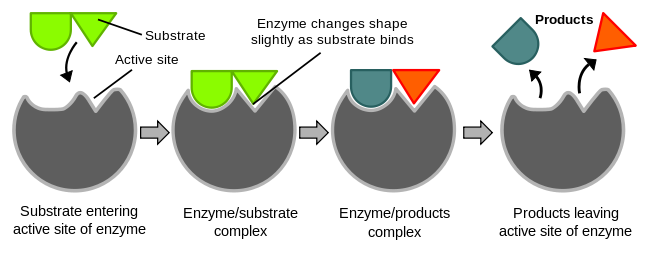Biochemical reactions INFO by Chemical Man
Biochemical reactions are mainly controlled by enzymes. These proteins can specifically catalyze a single reaction, so that reactions can be controlled very precisely. The reaction takes place in the active site, a small part of the enzyme which is usually found in a cleft or pocket lined by amino acid residues, and the rest of the enzyme is used mainly for stabilization. The catalytic action of enzymes relies on several mechanisms including the molecular shape ("induced fit"), bond strain, proximity and orientation of molecules relative to the enzyme, proton donation or withdrawal (acid/base catalysis), electrostatic interactions and many others.
The biochemical reactions that occur in living organisms are collectively known as metabolism. Among the most important of its mechanisms is the anabolism, in which different DNA and enzyme-controlled processes result in the production of large molecules such as proteins and carbohydrates from smaller units. Bioenergetics studies the sources of energy for such reactions. An important energy source is glucose, which can be produced by plants via photosynthesis or assimilated from food. All organisms use this energy to produce adenosine triphosphate (ATP), which can then be used to energize other reactions.


Leave a comment